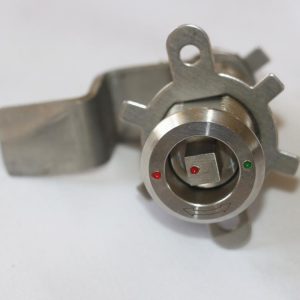With the increasing development of railway transportation, railway locks, as a crucial component for ensuring the safety of trains and cargo, have become increasingly important. However, traditional railway locks suffer from various issues such as susceptibility to damage, easy breakage, and limited effectiveness in preventing unauthorized access. Therefore, optimizing railway locks to enhance their safety and reliability has become an urgent issue in the railway transportation field.
I. Problems with Traditional Railway Locks
Traditional railway locks typically utilize mechanical structures such as chains, springs, etc., which can be prone to damage, such as rusting or breaking. Additionally, th ese locks are relatively easy to defeat, as unauthorized individuals can often open them using simple hand tools or technical means, posing a significant threat to trains and cargo.
ese locks are relatively easy to defeat, as unauthorized individuals can often open them using simple hand tools or technical means, posing a significant threat to trains and cargo.
II. The Necessity of Railway Lock Optimization
In response to the issues with traditional railway locks, optimizing lock design has become essential. Firstly, optimized locks should exhibit higher durability, capable of withstanding various harsh environments and ensuring long-term reliability. Secondly, locks should possess greater resistance to tampering, making them difficult to break or open by unauthorized individuals. Finally, optimized locks should incorporate advanced technological features, such as electronic technology and intelligent recognition systems, to enhance their safety and intelligence levels.
III. Technical Pathways for Railway Lock Optimization
-
Introduction of Electronic Technology: Replacing traditional mechanical locks with electronic locks can significantly improve lock safety and reliability. Electronic locks utilize technologies such as password protection, fingerprint recognition, and facial recognition for identity verification, making them difficult to defeat. Additionally, electronic locks can monitor lock status in real-time and trigger alarms in case of any abnormalities.
-
Enhancing Tamper-Resistance: Optimizing lock materials and structures to make them more difficult to damage or break. For example, high-strength materials can be used to construct locks, enhancing their resistance to tampering. Alternatively, internal anti-tampering devices can be installed within lock mechanisms to prevent unauthorized individuals from opening them.
-
Intelligence Upgrade: Integrating technologies such as the Internet of Things (IoT) and cloud computing into the railway lock system enables remote monitoring and management of locks. Through intelligence upgrades, managers can keep track of lock status and locations, enabling timely detection and resolution of issues. Additionally, intelligence upgrades can improve lock lifespan and reliability.
IV. Conclusion
Optimizing railway locks is a vital part of ensuring railway transport safety. By introducing electronic technology, enhancing tamper-resistance, and implementing intelligence upgrades, the safety and reliability of railway locks can be significantly improved. With the continuous development of technology, we believe that railway locks will become more advanced and reliable, providing a secure transportation environment for the railway industry.
